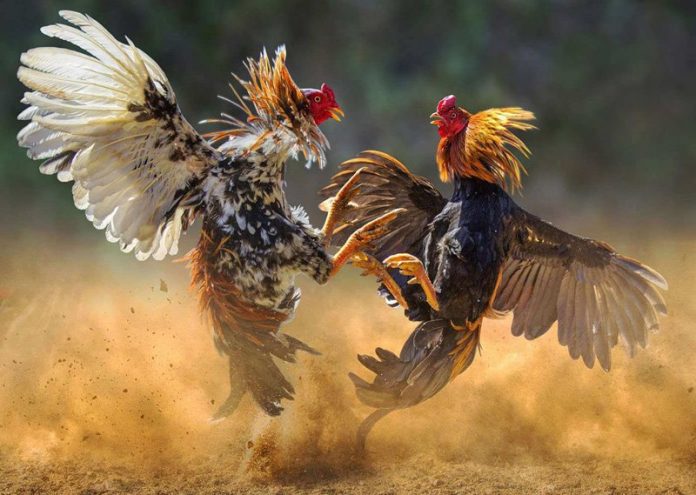
Within those depths of rural venues and makeshift arenas, a concealed world flourishes, where zeal and heritage merge in a display that has enraptured numerous for centuries. Cockfighting, often viewed through a lens of debate, embodies a vibrant mosaic of culture, community, and competition. Beneath the facade, the life of a fighting cock handler reveals itself, characterized by commitment, strategy, and an unshakeable connection with the birds they prepare.
Handlers, commonly regarded as both guardians and contenders, dive themselves in the complex art of raising and training fighting cocks. Each day is a blend of labor and love, in which the line between competition and fellowship fades. As they get ready their fowl for the ring, these people not only rely on their knowledge of animal behavior but also their own instincts and experience, often passed on through families. In a universe where every match is a test of skill, agility, and heart, the life of a fighting cock handler reveals a intricate story that is as much concerning the person as it is about the feathered athletes they champion.
Origins of Cock Fighting
Cockfighting has a colorful past that traces back millions of years, with evidence of its practice found in multiple cultures across the world. The first documented records of cockfighting are linked to old civilizations, including the Indus Civilization and ancient Greece. In these cultures, roosters were valued and often raised for their combat ability, turning into symbols of strength and valor. The practice spread through military victories and commerce, creating a footprint in countries such as the Roman Empire and later throughout Asia.
As cockfighting developed, it took on different cultural significances. In ancient Rome, it was popular among the elite and often included wagering, making it an initial form of entertainment that mixed sport and betting. Rooster fights were not just mere spectacles; they were events for social interaction and competition, showcasing the principles and social structures of the time. This interplay of culture and sport continued to grow, leading to more organized events and the creation of rules governing matches.
By the time cockfighting made its way to the Americas, it had already evolved a varied set of practices and celebrations. The sport became deeply embedded in the countryside traditions of Latin America and the Southern United States. Farmers and locals gathered for matches, and the sport fostered local identities and customs. Although often controversial, its longevity speaks to the compelling nature of the sport and the bonds it forms among participants and viewers alike.
The Role of the Handler
The caretaker plays an important part in the arena of bird fighting, acting as both the caretaker and trainer of the birds. The duties start well before the match, as handlers make sure that the roosters are in optimal shape. This involves a meticulous routine of feeding, exercise, and interaction, which aids in building the strength and behavior of the roosters. A knowledgeable handler devotes numerous hours watching and engaging with their birds, grasping their individual personalities and likings.
During training, trainers employ various techniques to prepare their birds for the fight. This may involve mock fights to assess their speed and motivation. Handlers must be adept in identifying when a rooster is ready for a fight and when further training is necessary. The bond created between the handler and the bird is crucial; trust and closeness can directly influence the rooster’s results. Effective communication is key, as handlers must learn to read their birds’ body language and responses. RR88
On the day of the match, the trainer acts as the tactician and emotional support for their bird. Their function goes beyond just letting the bird into the ring; they are tasked for rallying the audience and maintaining the spirit of the competition. The trainer’s expertise and instinct can greatly impact the result of a fight, as they take quick decisions that can change the course of the fight. Ultimately, the relationship between the handler and the bird encompasses dedication and reciprocal appreciation, forming the foundation of the cockfighting event.
A Ethics and Debates
Cockfighting raises major ethical concerns, primarily focused around the treatment of animals. Opponents argue that the practice is intrinsically inhumane, as it subjects birds to brutal confrontations that can lead to severe injuries or fatal outcomes. The breeding and training methods employed by handlers often prioritize aggression and fighting ability over the well-being of the animals. This has led to broad condemnation from animal rights organizations, which advocate for the humane treatment of all creatures and view cockfighting as a form of abuse.
Additionally, the cultural normalization of this practice in various communities complicates discussions about its ethics. For some, it is a historical tradition that represents a link to heritage and community spirit. Proponents cite the abilities required for handling and training the birds, as well as the community gatherings that occur around the events. However, this cultural perspective is frequently challenged by a increasing awareness of animal rights, leading to heated debates about the justification of preserving traditions that involve suffering to animals.
Legal controversies further complicate the issue, as cockfighting is illegal in many places while still being practiced underground. Authorities frequently grapple with enforcement, and where it is banned, supporters typically argue that the law interferes on personal freedoms and cultural practices. This results in a split between those who view this practice as a legitimate sport or cultural activity and those who believe it should be outlawed outright due to the implications of cruelty to animals. Balancing these perspectives remains a contentious aspect of the ongoing dialogue surrounding this issue.